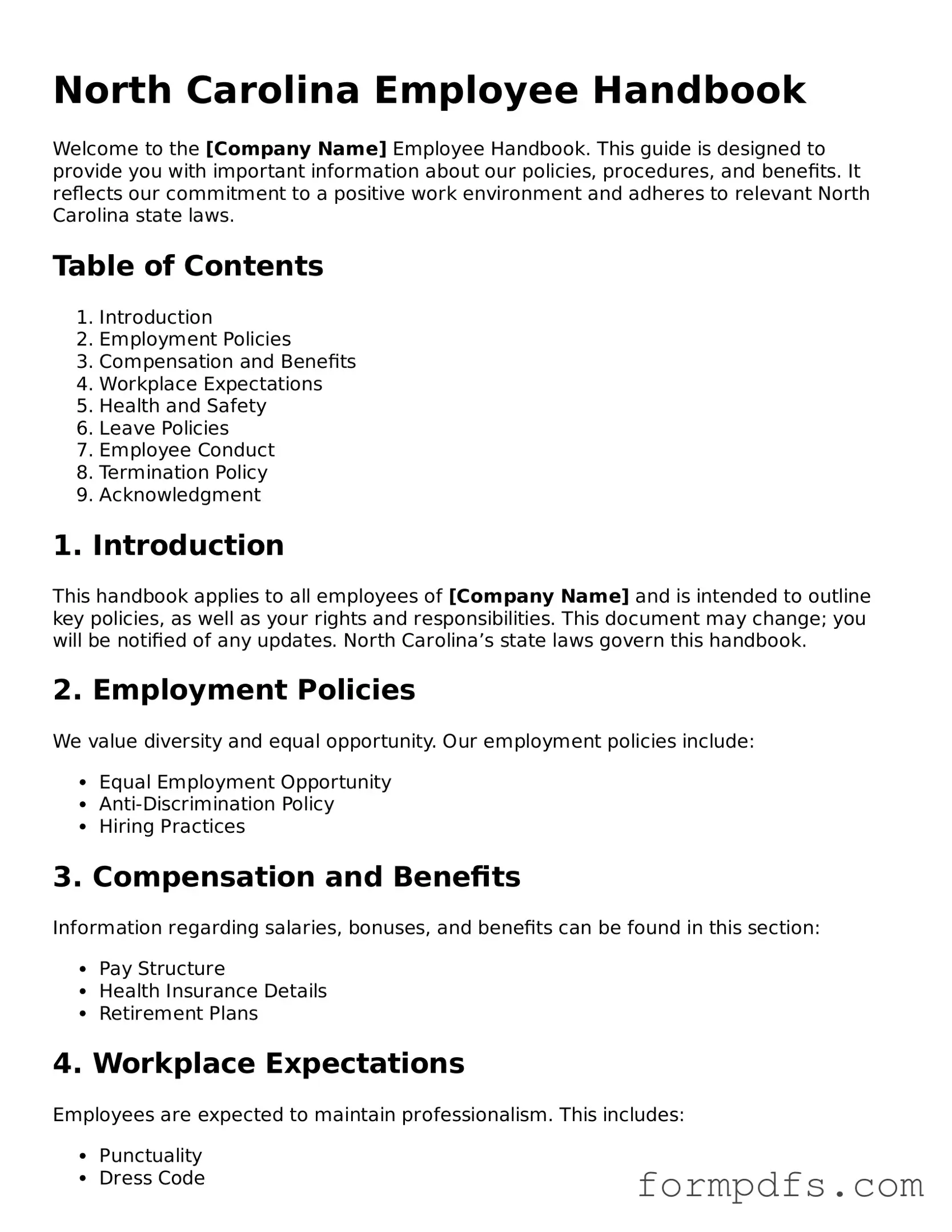Printable Employee Handbook Form for the State of North Carolina
The North Carolina Employee Handbook form is a crucial document that outlines workplace policies and expectations for employees. It serves as a guide to help employees understand their rights and responsibilities within the organization. To ensure compliance and clarity, it's important to fill out this form accurately and thoroughly.
Ready to get started? Fill out the form by clicking the button below.
Open Employee Handbook Editor
